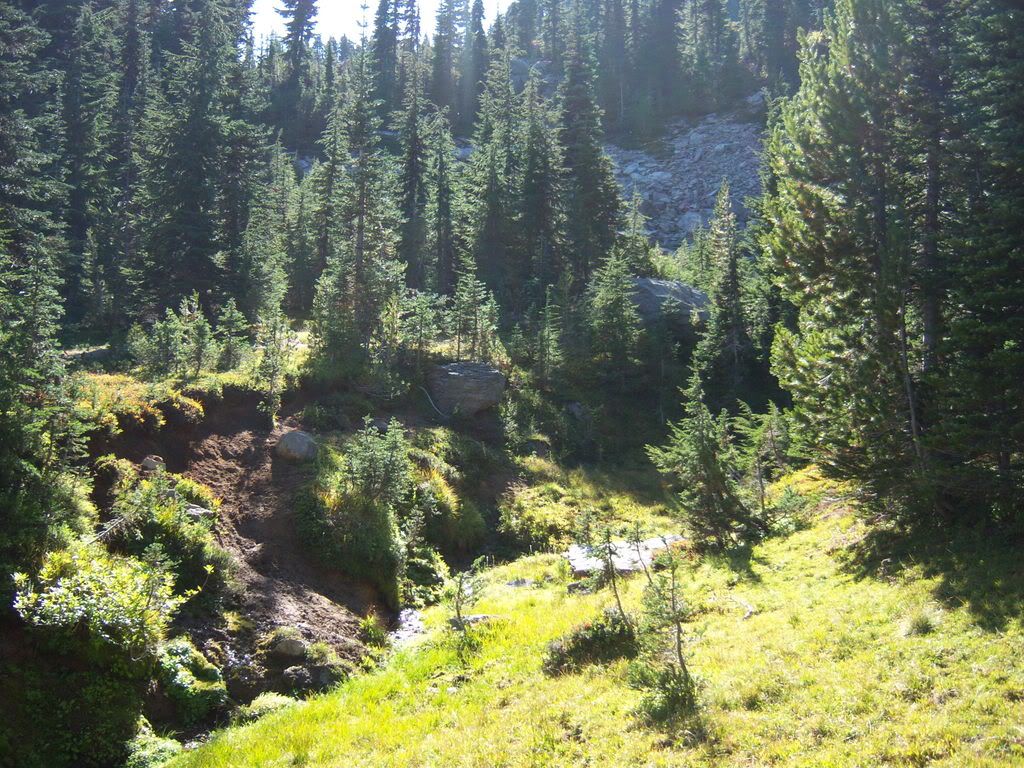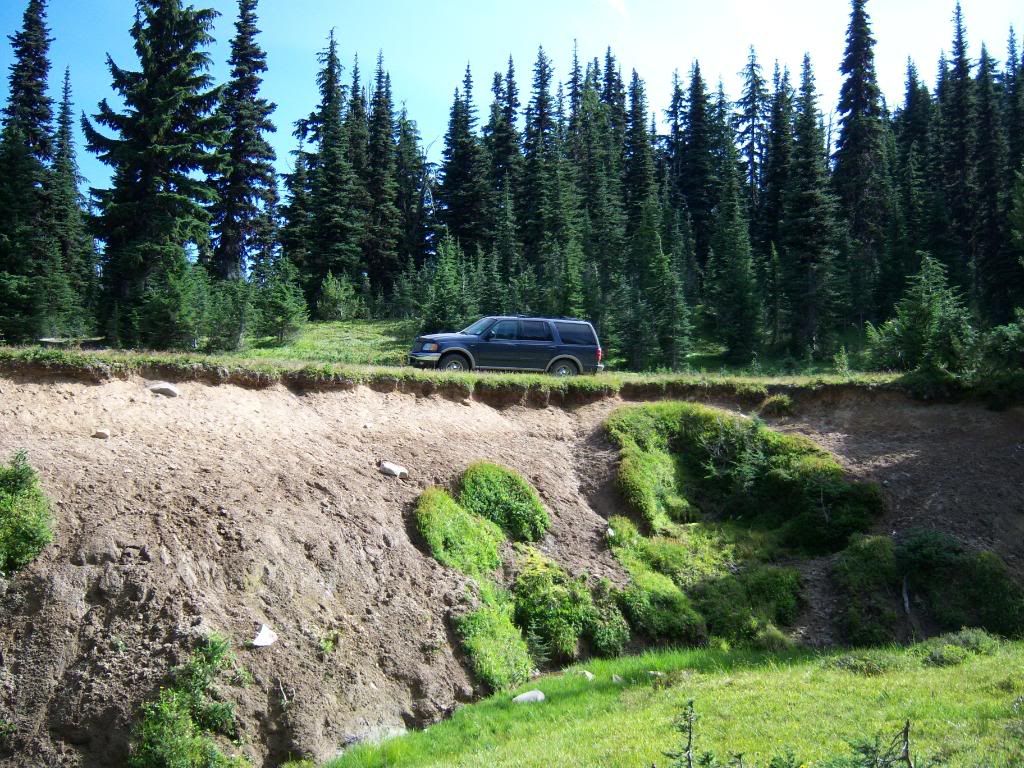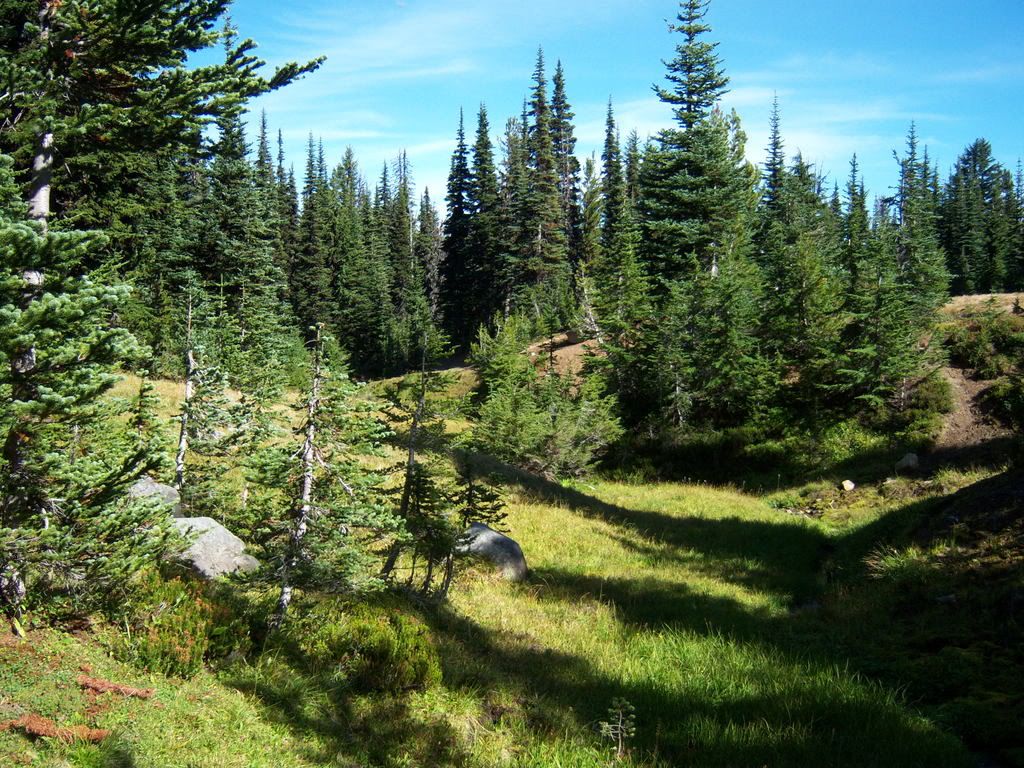CONCLUSION
As clearly documented in the foregoing evidence, the exemption of OSV use from the
requirements imposed on other motorized use on NFS lands by the 2005 Travel Management;
Designated Routes and Areas for Motor Vehicle Use Rule (CFR Parts 212, 251 and 281) is in
direct contradiction to Executive Orders 11644 and 11989 which the Rule is intended to
implement. Furthermore, because of adverse impacts on water and air quality, wildlife, wildlife
habitat and winter ecosystems, and because of the noise and the potential to inflict serious injury on other forest users, OSVs are indistinguishable from other classes of ORVs in terms of impacts on natural resources and other recreational uses. Therefore, the USDA and USFS have a legal and ethical obligation to apply the same set of management standards to OSVs as to other classes of ORVs in order to protect and preserve America’s National Forest System resources, including
clean air and water, quiet, wildlife, soils, vegetation, and non-motorized recreationists, from the
substantial adverse impacts of OSV use. Given this evidence, the USDA must amend the 2005
Rule by removing 36 CFR Part 212.51(a)(3) and remedying the language making the
management of OSVs a discretionary decision of the local responsible official (36 CFR Part
212.81) as requested by the Petitioners.
References
Andrews, R., and R. Righter, 1992. Colorado Birds: a reference to their distribution and habitat.
Denver Museum of Natural History, Denver, CO.
Aune, K.E., 1981. Impacts of Winter Recreationists on Wildlife in a Portion of Yellowstone
National Park, Wyoming. Master’s thesis. Montana State University.
Baker, E. and Bithmann, E., 2005. Snowmobiling in the Adirondack Park: Environmental and
Social Impacts. St. Lawrence University, Department of Biology.
Baker, J.P., and Christensen, S.W. 1991. Effects of Acidification on Biological Communities in
Aquatic Systems. In D.F. Charles, ed., Acidic Deposition and Aquatic Ecosystems -- Regional
Case Studies. Springer Verlag. New York, New York, USA.
Balk, L., Ericson, G., Lindesjoo, E., Petterson, I. Tjarnlund, U. and Akerman, G., 1994. Effects
of Exhaust from Two-Stroke Outboard Engines on Fish. Institute of Applied Environmental
Research, Laboratory for Aquatic Ecotoxicology, Stockholm University.
Banci, V. 1994. Wolverine. Pages 99-127 in L. F. Ruggiero et al. (eds.) The Scientific Basis for
Conserving Forest Carnivores—American Marten, Fisher, Lynx, and Wolverine in the Western
United States. General Technical Report RM-254. Rocky Mountain Forest and Range
Experiment Station. Fort Collins, Colorado.
Bjornstig, U., Ostrom, M., and Eriksson, A., 1994. Would a helmet law for snowmobile riders
reduce head injuries? Arctic Med. Res. 53:196-199.
Bluewater Network. 1999. Petition to prohibit snowmobiling and road grooming in National
Parks. Submitted to the National Park Service.
Boyle, S. A. and Samson F,B., 1985. Effects of Non-consumptive Recreation on Wildlife: A
Review. Wildlife Society Bulletin 13: 110-116.
Burson, S., 2008. Natural Soundscape Monitoring in Yellowstone National Park December
2007-March 2008. Yellowstone Center for Resources. USGS.
Bury, R.L. 1978. Impacts of Snowmobiles on Wildlife. Transcript. 43rd North American
Wildlife and Natural Resource Conference. WMI.
Petition to Remove OSV Exemption and Remedy Discretionary Management of OSVs – Draft 29
Buskirk, S.W., Romme, W.H., Smith, F.W., and Knight, R.L., 2000. An overview of forest
fragmentation in the southern Rocky Mountains. Pp. 3-14 in Forest fragmentation in the southern
Rocky Mountains, Boulder: University Press of Colorado.
Braun, C. E., Martin, K., and Robb, L. A., 1993. White-tailed Ptarmigan (Lagopus leucurus). In
The Birds of North America, No. 68 (A. Poole and F. Gill, Eds.). Philadelphia, PA: The
Academy of Natural Sciences; Washington, D.C.: The American Ornithologists’ Union.
Brattstrom, B.H., and Bondello, M.C., 1983. Effects of off-road vehicle noise on desert
Vertebrates in R.H. Webb and H.G Wilshire, editors. Environmental effects of off- road vehicles:
Impacts and management in arid regions. Springer-Verlag. New, York, New York, USA.
Brunnel, K.D., Fliners, J.T., and Wolfe M.L., 2006. Potential Impacts of Coyotes and
Snowmobiles on Lynx Conservation in the Intermountain West. Wildlife Society Bulletin, 34(3):
828-838.
Canadian Wildlife Federation, 1998. Below Zero Activities: Snowmobile Savvy. Wild
Education: Wild Programs
www.wildeducation.org
Canfield, J.E., Lyon, J., Hillis, J.M. and Thompson, M.J., 1999. Effects of recreation on Rocky
Mountain wildlife: A review for Montana. Montana Chapter of the Wildlife Society, pp 307.
Center for Disease Control. 1995. Injuries associated with the use of snowmobiles- New
Hampshire, 1989-1992. Morb. Mortal. Wkly. Rep. 44: 1-3.
Center for Disease Control. 1997. Injuries and deaths associated with use of snowmobiles-
Maine, 1991-1996. Morb. Mortal. Wkly. Rep. 46:1-4.
Charette, J.Y., Hammerli, J., and Papineau, M., 1990. Tech. Sci. Methods. 87(2):85-90.
Colescott, J.H., and M.P. Gillingham. 1998. Reaction of Moose (Alces alces) to Snowmobile
Traffic in the Greys River Valley, Wyoming. Alces 34(2):329-338.
Copeland, J.P., 1996. Biology of the wolverine in central Idaho. Thesis. University of Idaho,
Moscow, Idaho, USA.
Department of Agriculture, Forest Service. National Forest System Land Management Planning,
Notice of intent to prepare an environmental impact statement. 74 Fed. Reg. 67165, Dec. 18,
2009
Dorrance, M.J., Savage, P.J., and Huff, D.E.,1975. Effects Of Snowmobiles On White-Tailed
Deer. Journal of Wildlife Management 39 (3): 563-569.
Eckstein, R.G., O'Brien, T.F., Rongstad, O.R. and Bollinger. J.G., 1979. Snowmobile effects on
movements of white-tailed deer: A case study. Environmental Conservation. 6:45-51.
Petition to Remove OSV Exemption and Remedy Discretionary Management of OSVs – Draft 30
Environmental Protection Agency (EPA), 1971. Effects of Noise on Wildlife and Other Animals.
Prepared by Memphis State University
Environmental Protection Agency (EPA), 2002. Environmental Impacts of Newly Regulated
Non-road Engines: Frequently Asked Questions. Environmental Protection Agency, Office of
Transportation and Air Quality, Washington, D.C.
Eriksson, A., and U. Bjornstig. Fatal snowmobile accidents in northern Sweden. J. Trauma. 22:
977-982.
Freddy, D.J., Bronaugh, W.M., and Fowler, M.C., 1986. Responses of Mule Deer to Disturbance
by Persons Afoot and Snowmobiles. Wildlife Society Bulletin 14: 63-68.
Gabert, T., and Stueland, D.T., 1993. Recreational injuries and deaths in northern Wisconsin:
analysis of injuries and fatalities from snowmobiles over three years. WI Med. Jnl. 92: 671-675.
Ingersol, G.P., 1998. Effects of Snowmobile Use on Snowpack Chemistry in Yellowstone
National Park.
James, E.C., Lenz, J.O., Swenson, W.M., Clooney, A.M., and Gomez, Y.L., 1991. Snowmobile
trauma: An eleven year experience. Am. Surg. 57: 349-353.
Janssen, R. 1978. Effects of noise on wildlife -- noise and animals: Perspective of government
and public policy. Office of Noise Abatement and Control, U.S. Environmental Protection
Agency, Washington, DC.
Janssen, S. and Schettler, T., 2003. Health Implications of Snowmobile Use in Yellowstone
National Park.
Jeske, C.W. 1985. Time and energy budgets of wintering ring-necked ducks Ayatha collaris (L.)
in north-central Florida. Thesis. University of Florida, Gainesville, FL, USA.
Keddy, P.A., Spavold, A.J., and Keddy, C.J., 1979. Snowmobile Impact on Old Field and
March Vegetation in Nova Scotia, Canada: An Experimental Study. Environmental
Management. 3(5):409-415.
Knight, R.R., Mattson, D.J. and Blanchard B.M., 1984. Movements and Habitat Use of the
Yellowstone Grizzly Bear. U.S.D.I. natl. Park Service., Interagency Grizzly Bear Study Team.
Koehler, G.M., and Aubry, K.B., 1994. Lynx. Pages 74-98 in L.F. Ruggiero, K.B. Aubrey,
S.W. Buskirk, L.J. Lyon, and W.J. Zielinski, editors. The Scientific Basis for Conserving Forest
Carnivores: American Marten, Fisher, Lynx and Wolverine in the Western United States.
Petition to Remove OSV Exemption and Remedy Discretionary Management of OSVs – Draft 31
Landen, M.G., Middaugh, J., and Dannenberg, A., 1999. Injuries associate with snowmobiles,
Alaska, 1993-1994. Pub. Health Rep. V. 114, No. 1, pp. 48-52.
Magoun, A. J. and Copeland, J. P., 1998. Characteristics of wolverine reproductive den sites. J.
Wildl. Manage. 62(4):1313-1320.
Mattson, D.J. Use of Ungulates by Yellowstone Grizzly Bears Ursus arctos. Biological
Conservation. 81:161-177. 1997.
National AG Safety Database, Snowmobiles and Youth Safety Packet, Injury Fact sheet, at
www.cdc.gov/nasd/docs/d000901-d001000/d000977/2.html
Nelson, M.E., and Mech, L.D., 1986. Relationship between snow depth and gray wolf predation
on white-tailed deer. Journal of Wildlife Management, 50(3):471-474.
Oliff, T.K., Legg, K., and Kaeding, B. 1999. “Effects of winter recreation on wildlife of the
Greater Yellowstone Area: a literature review and assessment.” Report to the Greater
Yellowstone Coordinating Committee. Yellowstone National Park.
Paquet, P.C., Poll, D., and Callaghan, C. 1997. The influence of snow cover on movements of
gray wolves.
Reinhart, D., 1999. Effects of Winter Recreation on Habituated Wildlife. National Park Service:
Effects of Winter Recreation on Wildlife: 151-153.
Rongstad, O.J., 1980. Research needs on environmental impacts of snowmobiles. In R.N.L.
Andrews and P. Nowak, editors. Off-road vehicle use: A management challenge. U.S.
Department of Agriculture, Office of Environmental Quality, Washington, D.C.
Rowe, B., Milner, R. Johnson, C., and Bota, G., 1992. Snowmobile-related deaths in Ontario: a
five year review. Can. Med. Assoc. J. 146: 147-152.
Rowe, B., Milner, R. Johnson, C., and Bota, G., 1994. The association of alcohol and night
driving with fatal snowmobile trauma: a case control study. Annual Emergency Medacine 24:
842-848.
Ruzycki, J., and Lutch J., 1999. Impacts of Two-Stroke Engines on Aquatic Resources. National
Park Service: Effects of Winter Recreation on Wildlife: 145-147. Available:
www.nps.gov/yell/publications/pdfs/wildlifewinter/issuesimpacts.pdf
Shaver, C., Morse, D., and O’Leary, D., 1998. Air Quality In the National Parks. U.S.
Department of the Interior, National Park Service, Air Quality Division. Report prepared by
Energy and Resource Consultants, Inc., NPS Contract No. CX-0001-4-0054.
Petition to Remove OSV Exemption and Remedy Discretionary Management of OSVs – Draft 32
 If you thought that environmental groups and their allies in Congress would be happy with just locking up vast in Wilderness to eliminate motorized recreation, boy were you wrong.
If you thought that environmental groups and their allies in Congress would be happy with just locking up vast in Wilderness to eliminate motorized recreation, boy were you wrong.



 My dad used to go bar to bar snowmobiling with his friends in those states trail riding. I don't know anyone out in CO that drinks rides, its a much more serious affair out here.
My dad used to go bar to bar snowmobiling with his friends in those states trail riding. I don't know anyone out in CO that drinks rides, its a much more serious affair out here. 


